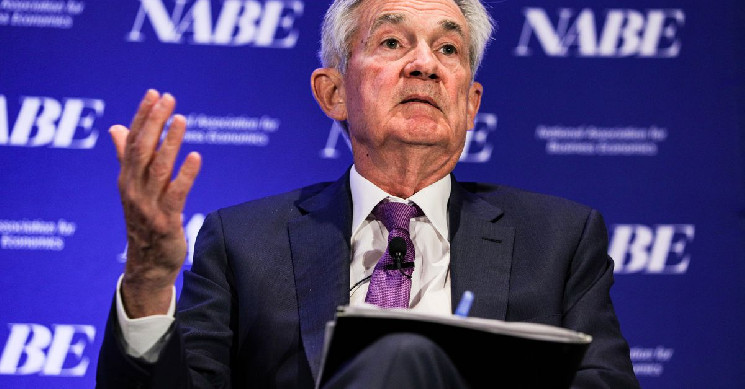It’s been almost a week since the U.S. Federal Reserve announced that it would raise interest rates for the first time in more than three years, and bitcoin (BTC) is still trading above the $40,000 mark.
That resilience might get battle-tested if the Fed sticks to its plans to stay hawkish until inflation is tamed, analysts say.
The largest cryptocurrency by market cap clearly reacted positively to the Fed’s March decision, suggesting that some traders use bitcoin as a hedge against inflation and rising prices.
Even after a speech this week by Fed Chair Jerome Powell that was seen as one of his most hawkish yet, BTC is still up 8% from a week ago, currently changing hands at $42,524.50. Powell told the National Association for Business Economics on Monday that there was an obvious need to “move expeditiously” to get monetary policy back to a more “neutral level.”
But looking ahead, the Fed’s hawkish stance could push down crypto prices, just like it will likely hurt equity markets.
“Crypto is acting more like a risk asset than an inflation protection,” Marc Chandler, Bannockburn Global Forex managing director and chief market strategist, said Tuesday on CoinDesk TV.
In the last couple of months, bitcoin has moved strongly in correlation with traditional stock markets, and it is down nearly 30% over the last year while inflation has surged to a four-decade high.
The Fed’s quarterly economic projections and its “dot plot” show that the median forecast of the members of the Federal Open Market Committee (FOMC) for the Federal Funds Rate is 2.38% for the long term, which is what the Fed believes is the “neutral” rate, a rate that would neither stimulate not restrain economic growth.
For 2022 and 2023, however, the Fed officials expect the rate to be at 2.75%, suggesting that they’re willing to go above what they perceive to be neutral in order to rein in inflation next year.
“If this forecast comes to pass, they’re going to lean on the markets; they’re going to want people to lose money,” said James A. Bianco, president and macro strategist at Bianco Research. “Will that hurt crypto markets and risk markets like stocks? Yes, and that’s part of the plan. They don’t want it to crash, they just want it to slow down.”
For a long time, economists have argued that the central bank’s main priority was economic growth, as in maximizing employment.
The focus has changed in the last year as the Fed “widely underestimated” inflationary pressures, as Powell admitted. As of now, inflation is of top concern, even if it hurts the market.
As more mainstream institutional money flows into crypto, there’s increased linkage to traditional financial markets. This makes crypto trade more in correlation with the stock market than it has before.
“I think a fundamental problem is widespread institutional adoption,” Bianco said. “It is going to struggle because the Fed is going to lean on the traditional financial markets to kill inflation, and all of these institutions … are probably going to sell it, just like they’re probably going to eventually sell their stocks if that forecast is correct.”
 coindesk.com
coindesk.com
